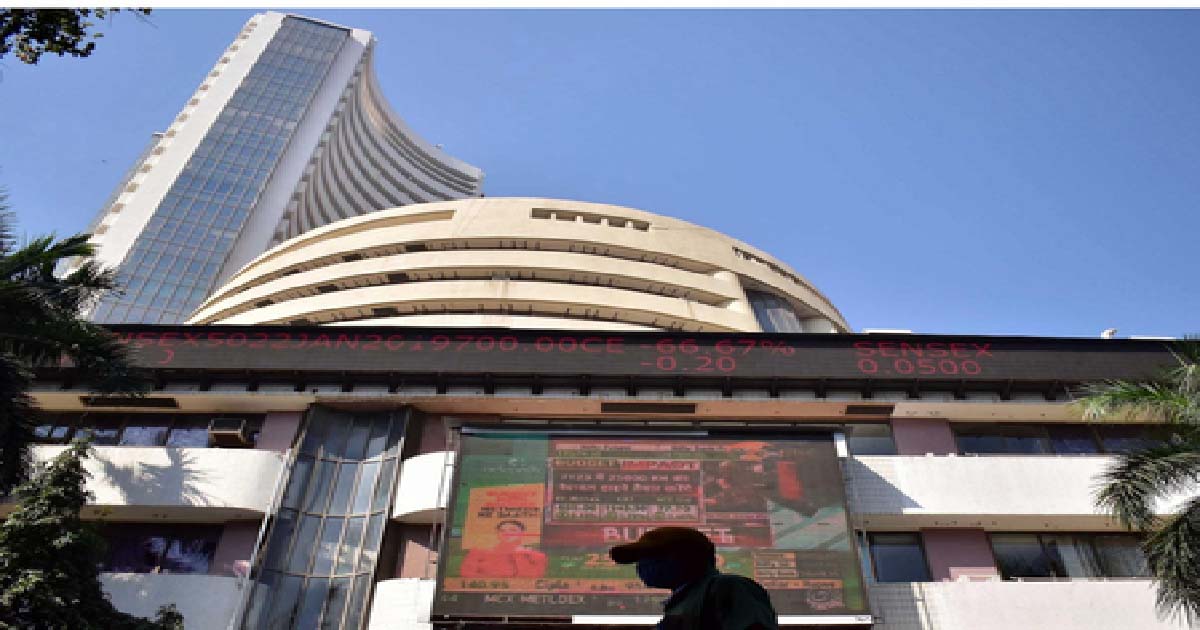Business
Tough road ahead for India’s Crypto moment
The Cryptocurrency and Regulation of Official Digital Currency Bill 2021, seeking to prohibit all private cryptocurrencies in India, was set to be tabled in the Winter Session of Parliament that began on November 29. But the Bill did not make it to the table — second time in a year — as the chorus around the legality of digital coins and how to safeguard investors’ money grew louder.
Grave concerns have now been raised over the misuse of digital coins on the Dark Web for terror acts and drugs trafficking by militant organisations, and for money laundering and hawala-based transactions — posing serious threat to national security and a big challenge to the security agencies in India.
While the Reserve Bank of India (RBI) wants a blanket ban on cryptocurrencies, the government remains in a confused state of mind.
From “all windows on cryptocurrencies will not be closed” to “no proposal to recognise Bitcoin as currency”, and “regulating cryptocurrency will have to be a collective effort”, Finance Minister Nirmala Sitharaman and her team is yet to make up their mind as to how to deal with this emerging situation, especially at a time when several countries like China, Bangladesh, Russia, Egypt, Morocco, Qatar, Turkey and Vietnam have banned or prohibited/restricted cryptocurrencies.
Will India finally see a fruitful Crypto Bill, after inserting global knowledge into its clauses as being sought by the government, next year?
According to Subhash Chandra Garg, former Finance Secretary of India and a key figure behind drafting the original Bill, crypto businesses and assets (built on the Blockchain cryptography technology in decentralised databases), including stable-coin currencies, are expanding fast in the world.
“India, though not quite deep into developing crypto platforms like Ethereum or in creating crypto-businesses, has acquired a fancy for crypto-assets of different types. This fascination started with Bitcoin and has now expanded to many other crypto-assets (loosely referred to as crypto-currencies),” Garg told IANS.
Garg sees this fascination continuing in 2022 as well.
“Although, if there is a big crash in crypto-asset prices, which is inevitable sooner or later, Indian investors might bolt from crypto-stables, but only after their noses get bruised,” he warned.
Organisations globally were forecast to spend nearly $6.6 billion on Blockchain solutions this year, an increase of more than 50 per cent compared to 2020, according to the International Data Corporation (IDC).
Blockchain spending will continue to see strong growth throughout the 2020-2024 forecast period with a five-year compound annual growth rate (CAGR) of 48 per cent and reaching nearly $19 billion in 2024.
The deployment of Blockchain technology for cross-border settlement will drive significant cost savings for banks, rising from $301 million in 2021 to $10 billion in 2030 — a whopping 3,300 per cent growth in cost savings, according to a report from Juniper Research.
From an industry perspective, banking leads the way in Blockchain spending, followed by process manufacturing and discrete manufacturing and IT services and business services.
Given its pool of tech talent and early adoption, India will have a crucial role to play in the Blockchain-based financial world order.
“Blockchain-cryptography technology is brilliant and full of promise and the businesses and assets being built thereon are quite valuable. However, there is no good way at present to assess the true value of crypto-assets and businesses. Present prices reflect the euphoria of this potential,” Garg noted.
“Indian entrepreneurs might also be able to unscramble this technology by then and start building good crypto-Blockchain technology service businesses. That would be the beginning of true crypto adoption in the country,” he added.
Amid the growing adoption around Blockchain, the cryptocurrency exchanges have recently mushroomed with deep business interests in mind.
According to experts, the government must not only ensure that investors’ money is safe, but also trace millions of dollars that have been routed via crypto exchanges and platforms that the relevant authorities have no clue about.
A media report said in November that over Rs 4,000 crore of illegal transactions via cryptocurrency exchanges have been unearthed by the Enforcement Directorate (ED) in the last one year.
“The crypto craze has reached Tier 2 and 3 towns and non-regulation of this market of Rs 6 lakh crore size is raising questions on the sovereign authority of the Government of India. Non-levy of GST in various layers of its transaction and non-imposition of income tax with penalty is already causing huge loss to the state and Central government’s revenues,” said New Delhi-based cyberlaw expert Virag Gupta.
The Indian government faces a tough road ahead on Crypto in 2022, and taking the right decision will have to be a collective one.
Business
Sensex, Nifty open flat as IT and pharma gain

Mumbai, Dec 3: The Indian stock market opened on a quiet note on Wednesday, with both benchmark indices showing minimal movement in early trade.
The Sensex inched up by just 12 points to 85,151, while the Nifty slipped 18 points to 26,014.
Most of the major Sensex stocks were trading in the red, dragging the indices sideways. Shares of HUL, Titan, Tata Motors PV, NTPC, BEL, Trent, Bajaj Finserv, Kotak Bank, Ultratech Cement, Maruti Suzuki, L&T, Power Grid, and ITC were among the top losers in the morning session.
Despite the broader weakness, some heavyweights helped limit the downside. TCS, Infosys, Eternal, HCL Tech, Axis Bank, Tech Mahindra, and Adani Ports were trading higher, providing support to the indices.
In the broader market, mid- and small-cap stocks showed resilience. The Nifty MidCap index managed to rise 0.02 per cent, while the Nifty SmallCap index gained 0.08 per cent after erasing early losses.
Sector-wise, IT and pharma stocks outperformed the market. The Nifty IT index rose 0.7 per cent and the Nifty Pharma index added 0.3 per cent.
These sectors benefited from the Indian Rupee hitting a record low, as many companies in these industries earn a significant part of their revenue in dollars while most of their expenses are in rupees.
On the other hand, PSU bank stocks were under pressure, with the Nifty PSU Bank index falling 0.6 per cent in early trade.
Analysts said that the market remained range-bound as mixed global cues and a weak currency influenced investor sentiment.
“The ideal strategy for investors in this period of uncertainty is to remain invested in high quality growth stocks in the large and midcap segments. Smallcaps, as a segment, continues to be overvalued and are, therefore, best avoided,” market watchers added.
Business
Sensex, Nifty recover from early fall as profit booking keeps markets volatile

Mumbai, Dec 2: Indian stock markets opened with a sharp gap-down on Tuesday but soon recovered some losses as investors continued to book profits after the recent rally.
The Sensex was trading at around 85,508, down 134 points or 0.16 per cent, while the Nifty slipped 31 points or 0.12 per cent to 26,145.
“The Nifty’s positional trend remains bullish, with strong support at the 26000-26050 zone. On the higher side, 26300 could offer resistance on a closing basis,” market watchers added.
Heavyweights such as HDFC Bank, ICICI Bank, Ultratech Cement, Axis Bank, Bajaj Finserv, Tata Steel, Tata Motors PV, Titan Company and Power Grid dragged the indices lower.
Eternal also remained under pressure during the early trade.
However, selective buying in stocks like Asian Paints, Infosys, Bharti Airtel, Bajaj Finance, SBI, Maruti Suzuki, NTPC, HUL, and L&T helped the Sensex limit its losses and attempt a mild recovery.
In the broader market space, the Nifty MidCap index edged up 0.27 per cent, indicating some buying interest in mid-sized companies. On the other hand, the Nifty SmallCap index slipped 0.12 per cent.
Sector-wise, financial stocks were among the worst performers, with the Nifty Financial Services index falling 0.7 per cent and the Nifty Bank index dropping 0.4 per cent.
Meanwhile, the Nifty PSU Bank index gained 0.9 per cent, emerging as the top performer, followed by the Nifty Auto index, which rose 0.4 per cent.
Analysts said that markets remained volatile as traders continued to take profits amid mixed global cues.
“Investors can use the current period of consolidation to slowly accumulate fairly-valued largecaps and growth-oriented midcaps which will lead the next leg of rally in the market,” analysts stated.
The Smallcap segment continues to be over-valued. The Bank Nifty, despite the recent run up, have the potential to impart resilience to the market since there is valuation comfort in this segment. The pick up in credit growth is another positive for the segment.
Business
Gross enrolment under Atal Pension Yojana surpasses 8.34 crore: FM Sitharaman

New Delhi, Dec 1: Gross enrolment under the Atal Pension Yojana (APY), a bid to create a universal social security system for all, especially the poor, the under-privileged and the workers in the unorganised sector, has reached 8,34,13,738 (as on October 31), the Parliament was informed on Monday.
APY was launched in 2015 with the objective of creating a universal social security system for all Indians. It is open to all citizens of India between 18 and 40 years of age who have a savings account in a bank or post office.
As per the Scheme, the subscriber will receive pension benefits on attaining the age of 60 years.
“Hence, the pension benefit under APY is expected to start from 2035 onwards. However, the gross enrolment under Atal Pension Yojana as on 31.10.2025 is 8,34,13,738,” Finance Minister Nirmala Sitharaman told the Lok Sabha in a written reply to a question.
As on October 31, the female gross enrolment under APY is 4,04,41,135, which is 48 per cent of the total enrolment, she noted.
Further, in Bihar, the female gross enrolment under APY is 42,07,233, which is 57 per cent of the total enrolment in the state.
“As on 31.10.2025, a total of 7,153 Bank branches and 461 Post Office branches are enrolling people into APY in Bihar,” the Finance Minister stated.
The government and the Pension Fund Regulatory and Development Authority (PFRDA) have taken several steps to increase awareness and coverage of APY across the country, including rural and remote areas of Bihar.
These include periodic advertisements; APY Subscribers Information Brochure in 13 vernacular languages; and virtual capacity building programmes for Banking Correspondents (BCs) and field staff of Banks, Self Help Group (SHG) members, and bank-sakhis of State Rural Livelihoods Missions (SRLMs).
During the last five years, such programmes have been conducted across various districts of Bihar, including in Muzaffarpur, Patna, Bhojpur, and Nalanda.
Recently, financial inclusion campaigns for pension saturation were organised pan-India India including 8,093 such campaigns in Bihar, said Sitharaman.
-

 Crime3 years ago
Crime3 years agoClass 10 student jumps to death in Jaipur
-

 Maharashtra1 year ago
Maharashtra1 year agoMumbai Local Train Update: Central Railway’s New Timetable Comes Into Effect; Check Full List Of Revised Timings & Stations
-

 Maharashtra1 year ago
Maharashtra1 year agoMumbai To Go Toll-Free Tonight! Maharashtra Govt Announces Complete Toll Waiver For Light Motor Vehicles At All 5 Entry Points Of City
-

 Maharashtra1 year ago
Maharashtra1 year agoFalse photo of Imtiaz Jaleel’s rally, exposing the fooling conspiracy
-

 National News1 year ago
National News1 year agoMinistry of Railways rolls out Special Drive 4.0 with focus on digitisation, cleanliness, inclusiveness and grievance redressal
-

 Maharashtra1 year ago
Maharashtra1 year agoMaharashtra Elections 2024: Mumbai Metro & BEST Services Extended Till Midnight On Voting Day
-

 National News1 year ago
National News1 year agoJ&K: 4 Jawans Killed, 28 Injured After Bus Carrying BSF Personnel For Poll Duty Falls Into Gorge In Budgam; Terrifying Visuals Surface
-

 Crime1 year ago
Crime1 year agoBaba Siddique Murder: Mumbai Police Unable To Get Lawrence Bishnoi Custody Due To Home Ministry Order, Says Report












